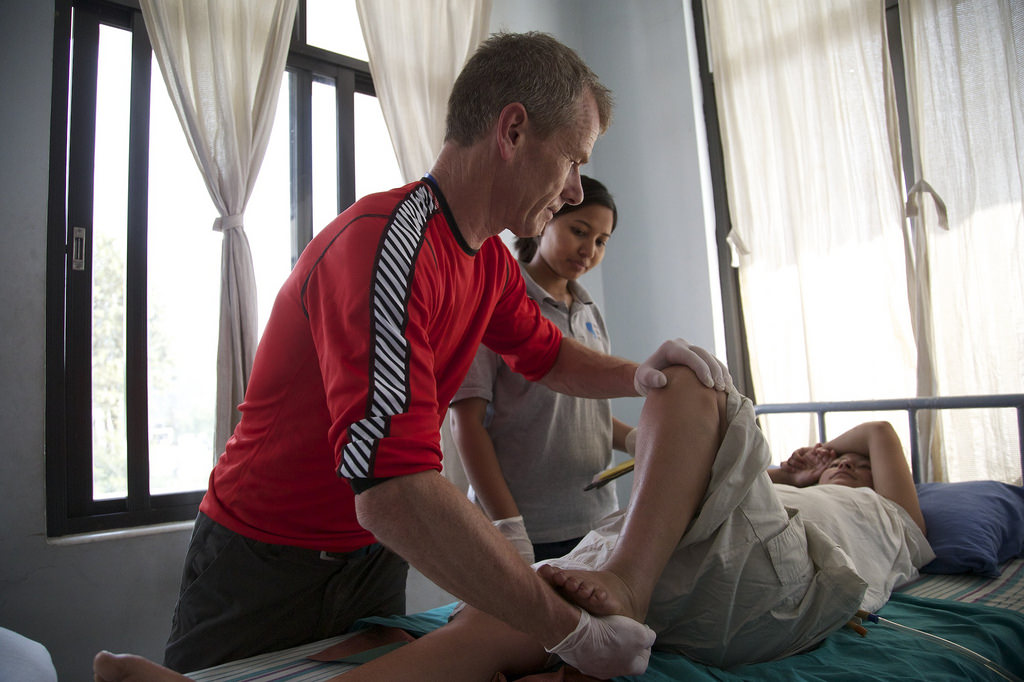
When you roll your ankle or strain your knee, chances are the first thing you’ll reach for is the ice pack. It’s common knowledge now that when you’re in pain, you should probably rest, ice the affected area, and even elevate it. Called the RICE treatment, it’s been used for decades to treat injuries, pain, and inflammation. However, many people may be doing this common practice wrong.
What Is The RICE Treatment?
RICE is an acronym that stands for Rest, Ice, Compression, and Elevation. For years, doctors, sports medicine professionals, and others in healthcare have always recommended this treatment for common sprains and strains and other musculoskeletal injuries. Many people use RICE to manage injuries as its primary use is to reduce inflammation, swelling, and pain. The base idea of a RICE treatment program is correct, but there’s been a great misunderstanding on how to do it properly. This misguidance on RICE has been caused mostly by changes from new developments made in sports medicine in how we understand biomechanics and injuries.
Treatment of injuries has drastically changed just over the last few decades from complete rest to using exercise and physical therapy. Resting, ice, compression, and elevation are still used in the immediate treatment of injuries, but how it’s done is slightly changed.
Rest
It’s always important to rest an area of the body that is in pain so as to protect it from further injury. However, how you rest could determine how fast you recover and how well you recover. Rest, however, is not complete inactivity. Inactivity could result in decreased strength in the muscles and supporting muscles of the affected area. Complete inactivity could also decrease mobility and increase swelling. You should think of rest as lightening the load instead or switching to an activity that doesn’t put as much stress on the affected area.
For example, if you strained your knee, the last thing you want is to be completely inactive. Instead, opt for an exercise that is low impact such as swimming, yoga, Pilates, and even walking. It’s important to determine, however, how much stress and exercise you should be doing during recovery. This is difficult to do without a deep understanding of injury rehabilitation and biomechanics, two areas physical therapists are highly trained in.
Ice (And Heat)
There are little studies that prove that icing an injury aids in its recovery. However, patients and physical therapists alike have experienced the power of ice in reducing pain and swelling. Pain reduction is an important part of injury recovery as it helps you start moving more quickly if you’re not in pain.
At the same time, heat can also help reduce pain and aid in comfort during injury rehabilitation. You should apply ice nor heat for longer than 15 to 20 minutes at a time. Use ice first to help reduce inflammation. Then use heat later on in injury recovery. Heat will help increase circulation, relax tension, and reduce stiffness. Both are important during injury rehabilitation.
Compression
Compression, such as wraps, bandages, braces, and tape help immobilize and protect the joints of the affected area. Such compression techniques, such as Kinesio taping, is not the end all be all though. It is only a supplemental rehabilitation to a full therapy plan.
Elevation
Elevation should be part of the resting recovery phase of injury rehabilitation, similar to ice or heat. It can help decrease swelling, which can reduce pressure and pain in the affected area.
When To Use R.I.C.E
Typically, you should use RICE within the first 72 hours of an injury. However, many aspects of RICE should be used as part of an overall injury rehabilitation program. Active recovery, such as physical therapy, may not come until later after swelling and pain are reduced. IYou may use ice, heat, compression, and elevation throughout the recovery phase to reduce swelling, pressure, and pain.
The best move to make after an injury is to see a doctor or physical therapist. A PT will diagnose and recommend the right treatment for you. It’s never too early to seek out a physical therapist. If you have a constant pain it’s time to get it professionally looked at by a physical therapist.


